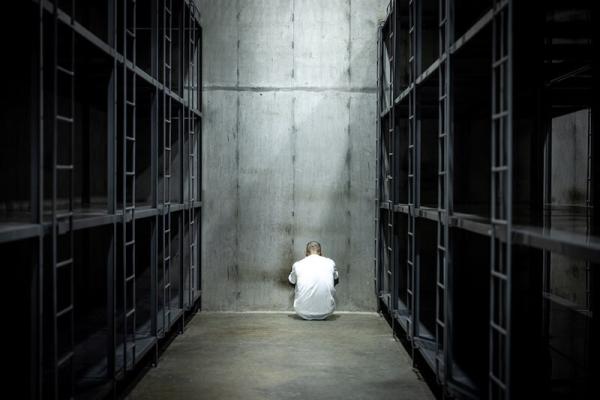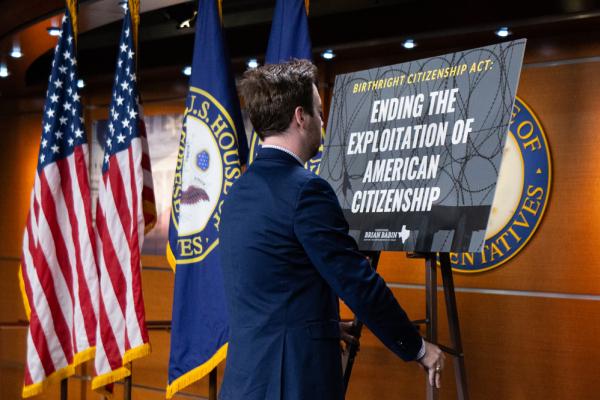WE DO NOT need another litany of climate disaster. What we need are stories of climate resilience—communities responding to the physical and spiritual needs wrought by climate collapse. For millions of people, those needs are brought by floodwaters inundating communities with rain and rising tides. And as waters rise, some churches also rise to generate spiritual and physical resilience, reimagining their land, mission, and ministry for the age of climate change. According to these congregations, climate action is not a deviation from the mission of the church; it’s the only way to remain true to the message of the gospel when floodwaters are rushing into our houses and sanctuaries.
Flow, river, flow
WERE IT NOT for the “Shrove Tuesday Pancake Dinner Tonight!” banner and obligatory “Episcopal church in 1 mile” sign, you could drive past St. Luke’s Episcopal Church and miss the building entirely. Obscured behind a line of oaks and a hillock of native hydrangea, the sanctuary almost disappears into the landscape. For Rev. Diana Carroll, that’s the hope.
When Carroll moved to Annapolis, Md., in 2012 to serve St. Luke’s, the four acres behind the church, which abuts Back Creek, a tributary of the Chesapeake, were a tangled mess of brush. The church had planned to clear that land to build a large sanctuary and convert the current structure into an education building, but Carroll and members of the St. Luke’s Green Team suggested St. Luke’s keep its current sanctuary and use the five acres as “a sanctuary without walls.” As Carroll envisioned it, if the church restored the land, it would still be “a sacred space as had always been dreamed about for that location.”
For years, St. Luke’s has been involved in climate action, integrating climate literacy into its preaching and education while advocating for stronger climate policy at the Maryland State House. So in 2017, when the 120-person congregation received a total of nearly $2 million in grants—largely from the Maryland Department of Natural Resources and the Chesapeake Bay Trust, plus small grants and donations through the church—to restore wetlands and a buried stream on their property that drained into Back Creek, they realized the project was a physical expression of their commitment to earthkeeping. With the help of an ecological restoration company, they coaxed back to the surface the stream that had been diverted through stormwater pipes and built a cascading streambed, with step pools and weirs—low dams to slow water flow—to filter the water as it makes its way toward Back Creek. They named the restored stream Bowen’s Branch, after a late congregant who cared deeply about watershed stewardship in Annapolis.
When I visited St. Luke’s in 2019, Carroll and I followed the curve of the stream to its mouth, which is now a living shoreline, a small coastal edge made of native plants and natural materials rather than a concrete seawall. In an age of climate crisis, marshes like this one are critical: As sea levels rise, marshes engage in a kind of dance with the rising tides through a process called accretion. This is especially important in a place like Annapolis, where waters breaching sea walls and submerging parking lots, roads, and sidewalks has become a frequent problem (only four such events were recorded in the early 1960s, compared to 63 in 2017). When the dock in downtown Annapolis floods, explained Carroll, the church’s marsh helps absorb the extra water. The marsh is also a carbon sink, more effective at sequestering carbon than the equivalent area of dry land.
By restoring their land to serve its intended purpose, the church created a climate sanctuary: absorbing higher tides, filtering polluted stormwater from extreme rain events, hosting displaced creatures, and drawing carbon out of the air. And while St. Luke’s sanctuary is high enough above sea level to be outside the floodplain, the same is not true for all Annapolis residents. The church is in solidarity with those neighbors, absorbing the water their houses cannot, holding a space for lament when devastation comes, and advocating for equitable climate solutions—an ecotone where the meditative ebb of human action meets the flow of steadily rising tides.
Data values
IN CHARLESTON, S.C., Paul Rienzo, pastor of Crosstowne Church, sat behind a desk constructed out of a reclaimed door. This door, removed after the first flood at his church, is a daily reminder of the Christian call to reclamation and restoration, Rienzo told me. It is from this desk that Rienzo has worked to reshape the mission of this church in the wake of the extreme flooding the Charleston community has seen in recent years.
Rienzo describes Crosstowne as a “newfangled evangelical” church, a 600-person congregation that is “good for somebody that’s on their third marriage ... good for the doubter, and we’re really good for atheists.” It’s also a church that has flooded three years in a row.
Three hurricanes, in 2015, 2016, and 2017, pummeled Crosstowne, each dumping enough water to require a massive rebuild of the sanctuary. After the third flood, the church interior was rebuilt in two weeks, but the church recognized that rebuilding wasn’t enough. The leadership team at Crosstowne decided to do something unusual for a church: gather scientific data. They hired a hydrology team and an environmental lawyer to analyze the onshore causes of the flooding so that the church could serve as a trustworthy hub of communication with their neighbors and the city.
The study found that as climate change exacerbates rainfall intensity, unsustainable development results in water flowing over concrete rather than percolating into the soil. When rain falls, streets and storm drains are inundated with more water than they can handle, and the excess water ends up 3 feet deep in the sanctuary of Crosstowne. According to the Fourth National Climate Assessment, by the end of the century heavy rainfall events in the Southeast U.S. are expected to double, and the amount of water falling on extreme rain days will increase by 21 percent. As more rain falls on hard surfaces around Charleston, Crosstowne has realized it will be underwater more frequently.
With their data-driven study, Crosstowne became experts on flooding in the area around Charleston’s Church Creek Basin. Rienzo worked with the city to develop new stormwater retention guidelines, reshaping how development is done in Charleston. The benefits of Crosstowne’s work extended beyond its walls, to local homeowners who “were looking at buyouts, flooding, delays,” Rienzo told the local Live 5 News. “So we began to see we were not just doing this study for ourselves. It was a study to do for the community around us.”
While most in the city supported Crosstowne’s efforts, others worried that small-scale, privately funded reports like the church’s study would distract from the need for a comprehensive citywide study. But even in the midst of pressure from many sides to, as Rienzo described, “let the scientists and the politicians do their job and, you religious folks, you go in the other room and talk about values,” Crosstowne held firm to its conviction that getting involved in policy—even when inconvenient—was an act of faith. “It just seemed like the gospel thing to do,” said Rienzo.
Rienzo continued to tend the spiritual needs of Crosstowne, which included congregants who had been displaced from their own homes in the floods. He led a sermon series on the book of Nehemiah so that the church would see itself “as being a part of a biblical story.”
The eponymous book describes how Nehemiah led the rebuilding of the walls around Jerusalem, a task fraught with conflict from Judah’s enemies. Nevertheless, the people of Jerusalem “committed themselves to the common good” (Nehemiah 2:18), standing shoulder to shoulder, each person building a segment of wall “opposite his house” (3:6-12). For Rienzo, this was an important lesson. “[Nehemiah] got a buy-in from everybody. And so that was one of the important pieces of it: that everybody was going to be a part of this solution together.”
Crossing over the threshold of Crosstowne, I noticed a watermark, 3 feet high on the door. While the rest of the church was renovated, they kept the doors as a reminder of where they have been. As congregants enter the church, they symbolically proclaim a remembrance of the flood, a celebration of Crosstowne’s reclamation, and a recommitment to the work of justice in Charleston.
Down by the riverside
GIVEN THE REALITY of the climate crisis unfolding around us, the time for hope as our driving force has passed, writes climate activist Mary Annaïse Heglar. Instead, we need courage to be “strong enough, ferocious enough, brave enough” to fight for what’s left. That courage is what I saw when I visited St. Paul African Methodist Episcopal Zion Church in 2019.
St. Paul’s is nestled feet from the Pamlico River in Aurora, N.C., a 500-person town known for its museum featuring locally found fossils. While these preserved traces of prehistoric organisms bring tourists to the town, their ancient, decayed, carboniferous cousins, converted to coal, oil, and gas, are forcing out Aurora’s residents.
In 2011, Hurricane Irene slammed into North Carolina’s Pamlico Sound, raising the tidal river to 10 feet above sea level, well beyond its banks, to swallow St. Paul’s. It happened again in 2018, when Hurricane Florence dumped waist-deep water in Aurora and broke 28 flood records across the Carolinas. It is almost guaranteed the church will flood again soon. After Florence, the church was able to rebuild with insurance money, but that’s not the case for many Aurora residents who are struggling with the decision of whether to stay and face the floods or leave. Many have chosen the latter, and St. Paul’s, once a flourishing church with full pews, has diminished to six members.
In the very pews that were floating a year earlier, Glenoria Jennette, a second-generation member of St. Paul’s, and James Parker, a 91-year-old lifelong resident of Aurora, share stories of how the sea’s rising has affected their lives. Jennette lost her home, and nearly her husband, in Hurricane Irene and was forced to move inland to higher ground. Parker formerly worked in construction and has been part of efforts to raise houses and other structures onto stilts, an expensive adaptation technique that is inaccessible to low-income communities.
As we talked, Gerald Godette, who serves as a steward at the church, gently wove in the science behind climate change. Godette, a former marine biologist, went into ministry in 2015; faith, justice, and science, in that order, inform and guide Godette’s work in the community. He’s also a skilled facilitator, able to guide a conversation that weaves together Jennette and Parker’s stories with the science of climate change and scripture.
What’s remarkable about St. Paul’s isn’t the scale of their work; what’s remarkable is that despite the sea shrinking their congregation and driving away their neighbors, the six-person community has not become discouraged and inwardly focused. Godette recently partnered with North Carolina Interfaith Power and Light and the National Religious Partnership for the Environment to host public roundtables with coastal churches to talk about sea level rise adaptation. But as Godette told me before I visited, he also believes casual conversation is an important form of climate education. Often, if you “try to get your congregants to come to a formal setting to discuss climate change, they will not come,” he explains; the community is rightly suspicious of political and economic agendas disguised as church. So Godette has become a master of creating informal climate conversations.
While the shrinking size of the congregation presents challenges for St. Paul’s sustainability, the core of the church’s courage is a willingness to engage in conversations about climate change. Recent data shows that nearly 70 percent of people in the U.S. agree the climate is changing, but about two-thirds never talk about it. The same problem persists in our churches, where climate change often seems less important than other social issues or too political for the pews—at least until water floods those same pews.
There are physical needs that remain in Aurora, including a desperate need for funding to implement adaptation measures such as elevating the church and nearby houses on stilts. While federal programs exist to support adaptation, the scale of those programs is nowhere near the level of need. And the congregants at St. Paul’s see the same story of their history played out again: While wealthier, whiter communities receive funding to relocate or adapt, Aurora is left behind.
Yet, courage persists. Starting with their conversations in the pews of St. Paul’s, Jennette, Parker, and Godette continue to engage in local advocacy efforts to change those stories. And inside that riverside sanctuary, one informal conversation at a time, a community is strengthened.
Wading in
BEFORE I LEAVE St. Luke’s in Annapolis, Rev. Carroll tells me that the climate crisis and St. Luke’s response has strengthened her conviction that God uses the most unexpected people to do God’s work. “No one would have expected that such a small, financially struggling congregation as ours would have engaged in a $2 million project to do something that on the surface doesn’t actually benefit us. And yet it’s so clearly part of God’s mission in the world and God’s desire for the healing of the world.”
What these churches demonstrate is that we do not need a radical revision of the Christian mission during the climate crisis. What we do need is a return to the radical theology of the gospel and its messages of restoration, reclamation, and courage—the courage to radically reimagine the ways we use the gifts of our faith communities to meet the scale of the climate crisis and the imagination to stand shoulder to shoulder with churches across the country, commit ourselves to the common good, and together lay our small bricks of resilience.

Got something to say about what you're reading? We value your feedback!







